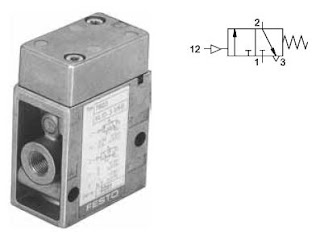are various elements which condition the control signals for a task. The
elements are:
- Dual pressure valve (AND function)
- Shuttle valve (OR function)
A shuttle valve permits the combination of two input signals into an OR
function. The OR gate has two inputs and one output. An output signal is
generated, if pressure is applied at one of the two inputs.

The further development of processing elements in pneumatics has
brought about the modular systems, which incorporate directional control
valve functions and logic elements to perform a combined processing
task. This reduces size, cost and complexity of the system.







